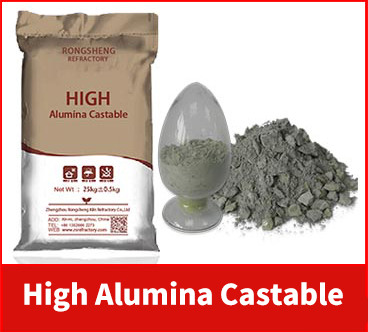Corundum wear-resistant castable belongs to the field of high-temperature wear-resistant refractory materials. The raw materials are composed of high-alumina homogeneous material, alumina powder, silica powder, clay, phosphoric acid, aluminum dihydrogen phosphate solution, and pure calcium aluminate cement. It is characterized by the use of synthetic homogeneous materials with low water absorption, low porosity and high uniformity to replace the traditional natural raw materials or corundum composite raw material system of sintered bauxite clinker with high water absorption, high porosity and poor uniformity. High-quality corundum, high-strength, wear-resistant and plastic.
1) How to use
This material adopts the ramming construction technology, which is suitable for the construction of parts with thin thickness such as the water wall of the furnace. After construction, the wear-resistant layer has high strength and wear resistance, which is different from the castable. The plastic does not need to support the mold, and the construction method of smearing and ramming is directly adopted. The material of the invention has good construction performance, high strength, good wear resistance, and the best on-site use effect, which is beneficial to prolong the service life of the furnace lining and improve the utilization efficiency of the high-temperature kiln.
2) Applicable area
It is mainly used in the dense phase area of the furnace and steam-cooled/water-cooled/adiabatic cyclone separators. The wear-resistant refractory material in this area is designed as a single-layer ramming structure and fixed by wear-resistant pins. The thickness of the design varies. Generally, the thickness is 40-60mm (air-cooled/water-cooled), 320-350mm (heat-insulated), only It needs to be laid directly on the construction surface.



